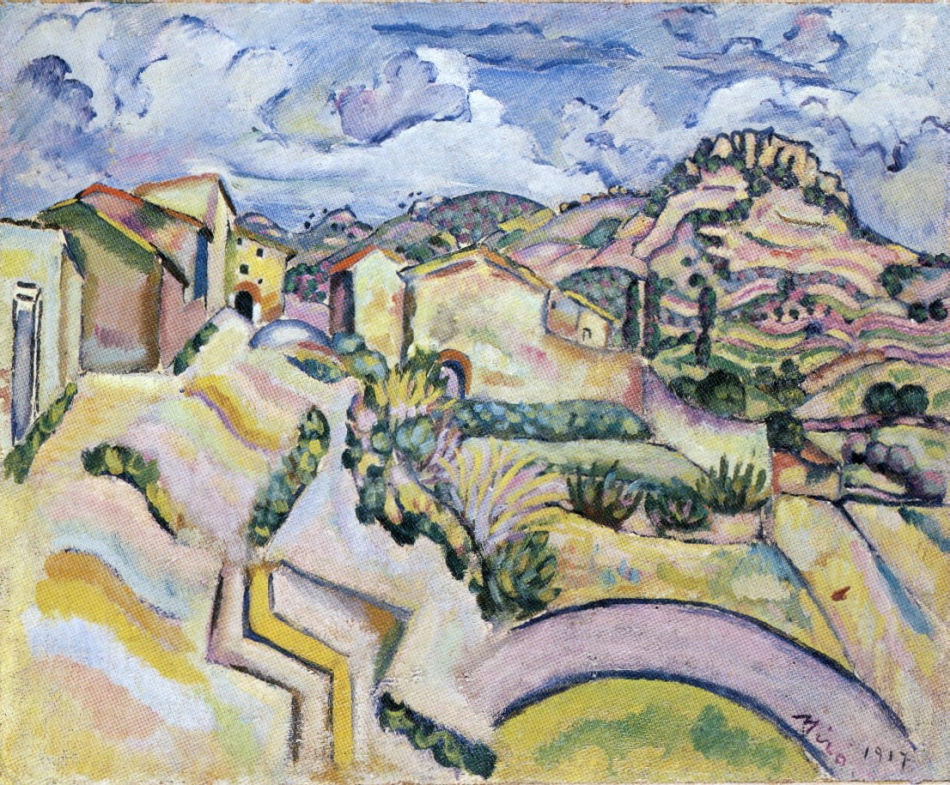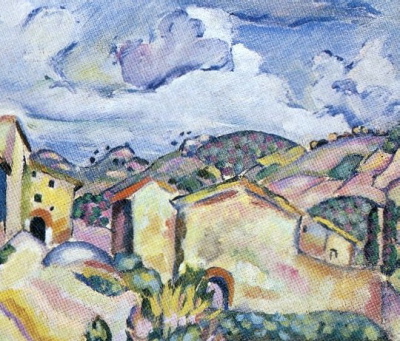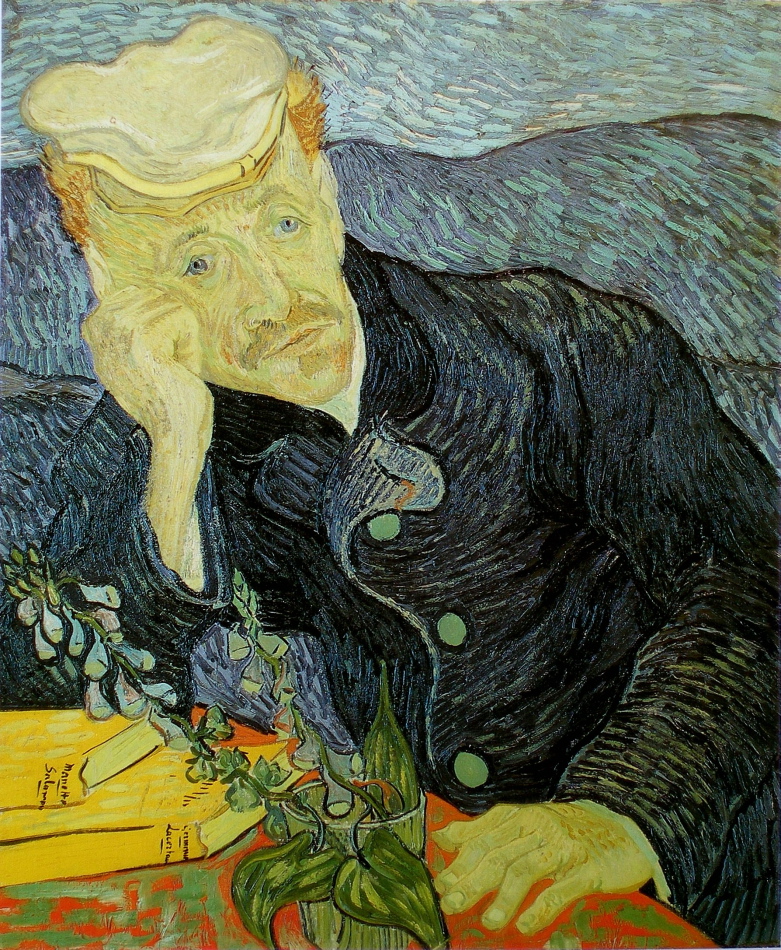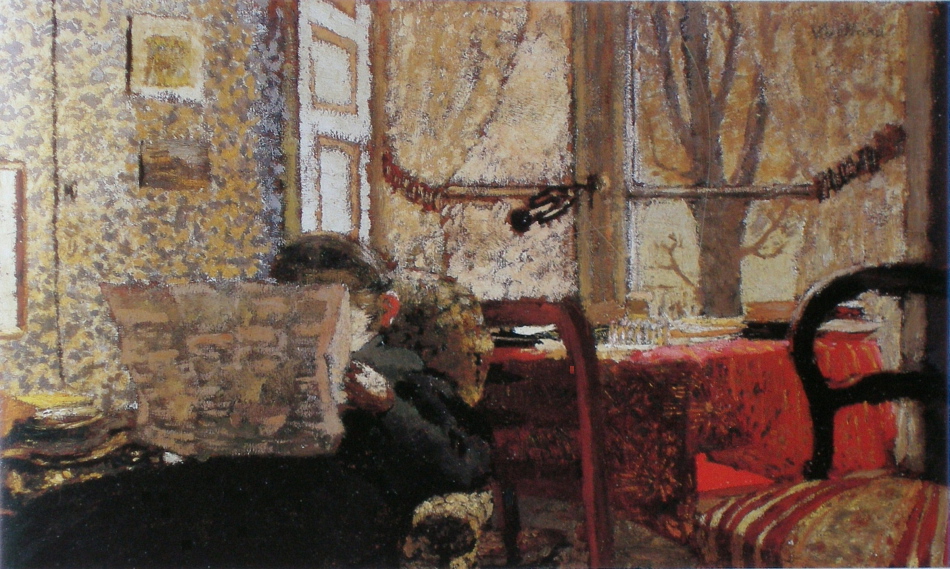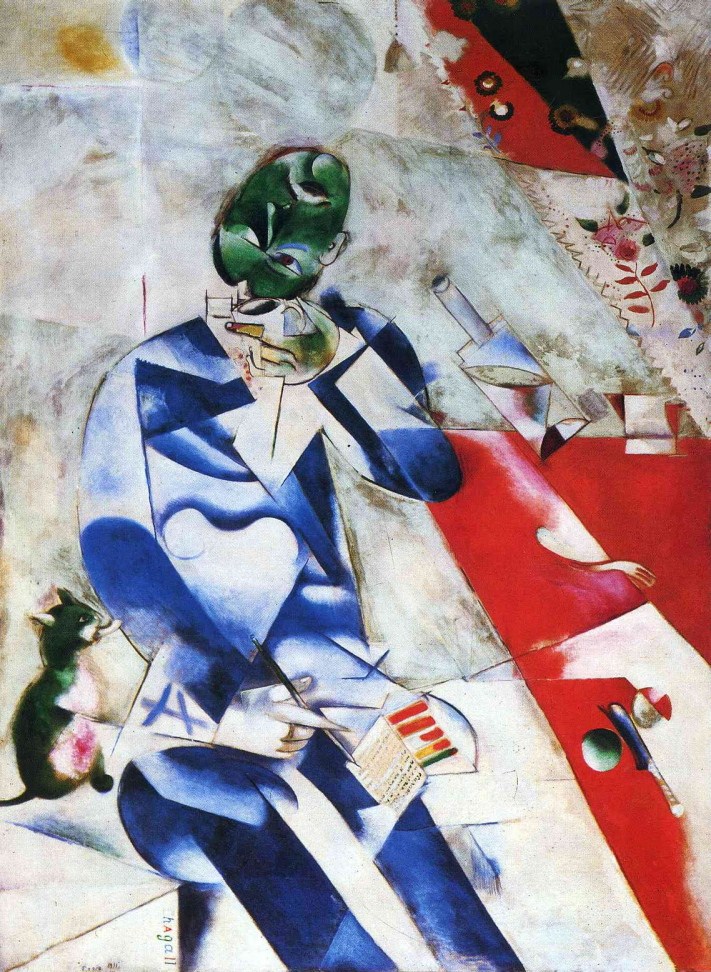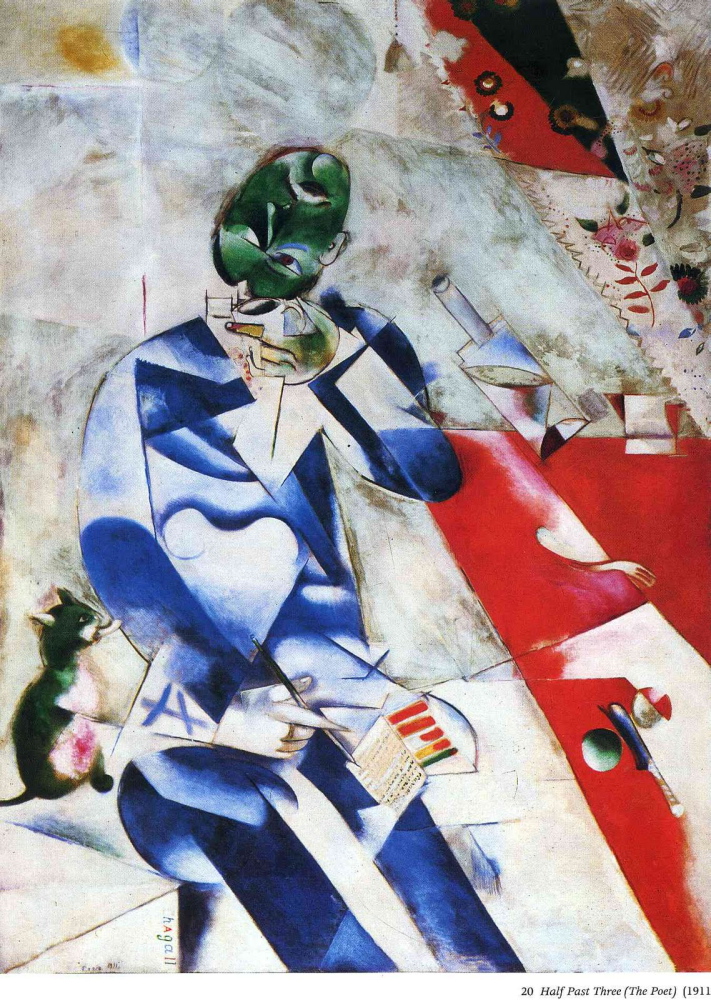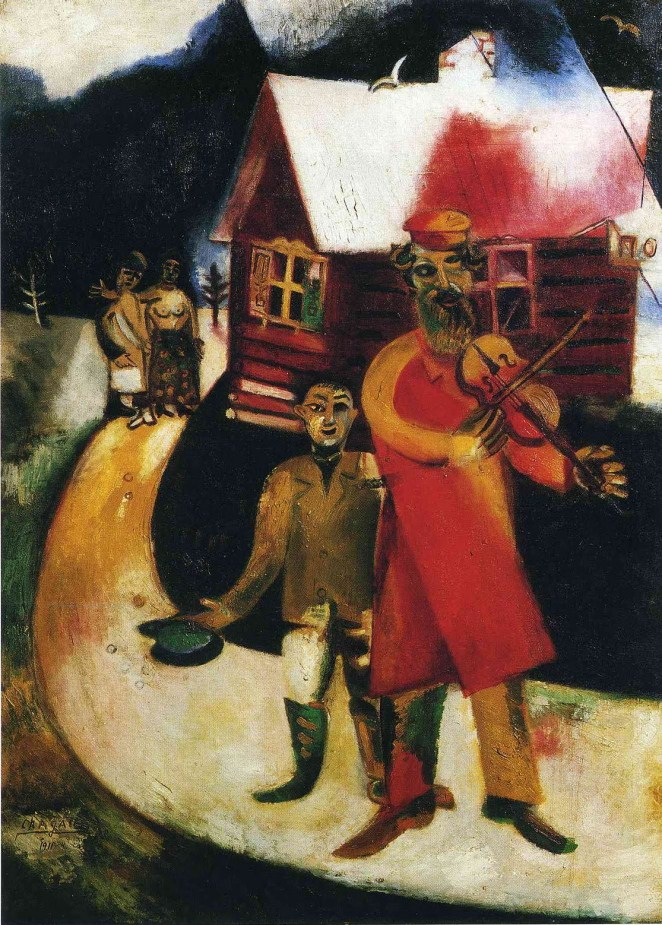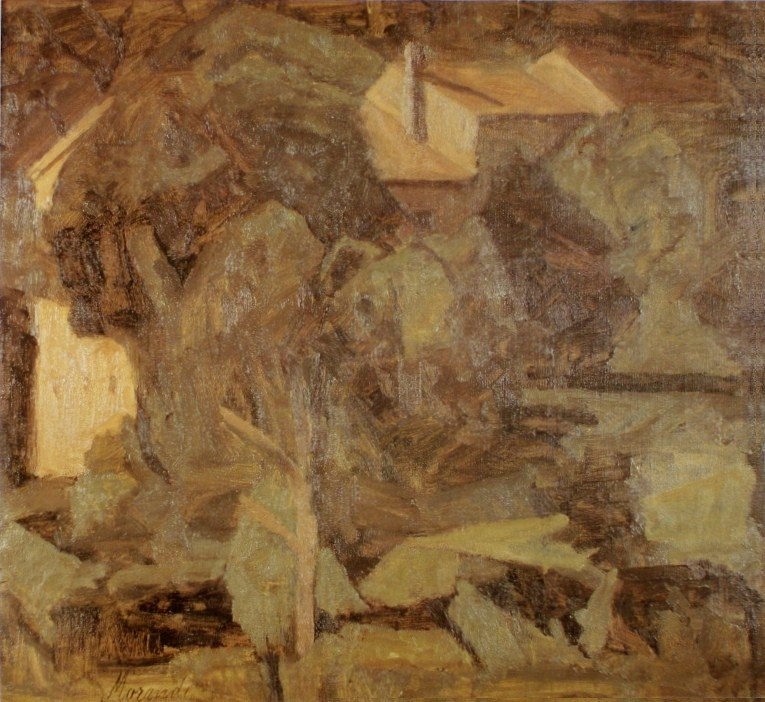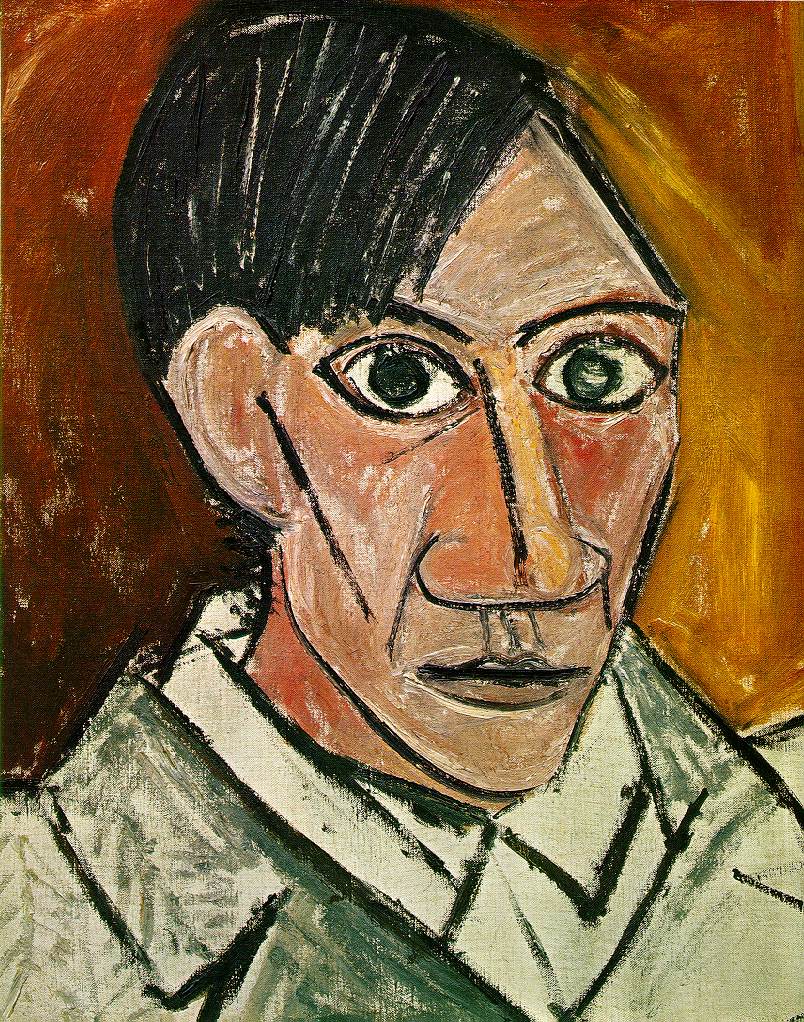I’m sure Miro was thinking of Cezanne in this rhythmic landscape. I love Miro’s wonderful rhythms and how sensitively he balanced movement with sophisticated structural support.
The rhythm of arches is primary, beginning with the large one, we then find them continuing up through the composition. There are several, and I would like to focus on a few which integrate the sky with the foreground.
My favourite is the movement provided by the arch in the sky and the arch of the hill below. Another two beauties are just below the yellow building with the black windows and the one at the right which connects to a wonderfully sensitive vertical which continues down through a wall.
Staying with the detail, l would Iike to mention the integration of the roofs at the right with the hill above, which brings us to another rhythm, those wonderful black dots just above the hills. They are in harmony with the little black windows in the yellow house, which is the focus of the composition.
Let us return to the full composition and the sensitive structural support for the rythmic movement of the arches, the two zig-zags at the bottom. Miro uses them to vertically take us towards the focus. The strong right angle next to the yellow zig-zag is the most important structural element, beautifully stabilizing the composition. And I hope you can feel how important the sensitive vertical I mentioned is to the composition.
Miro has invited us to partake in a visual poem!

